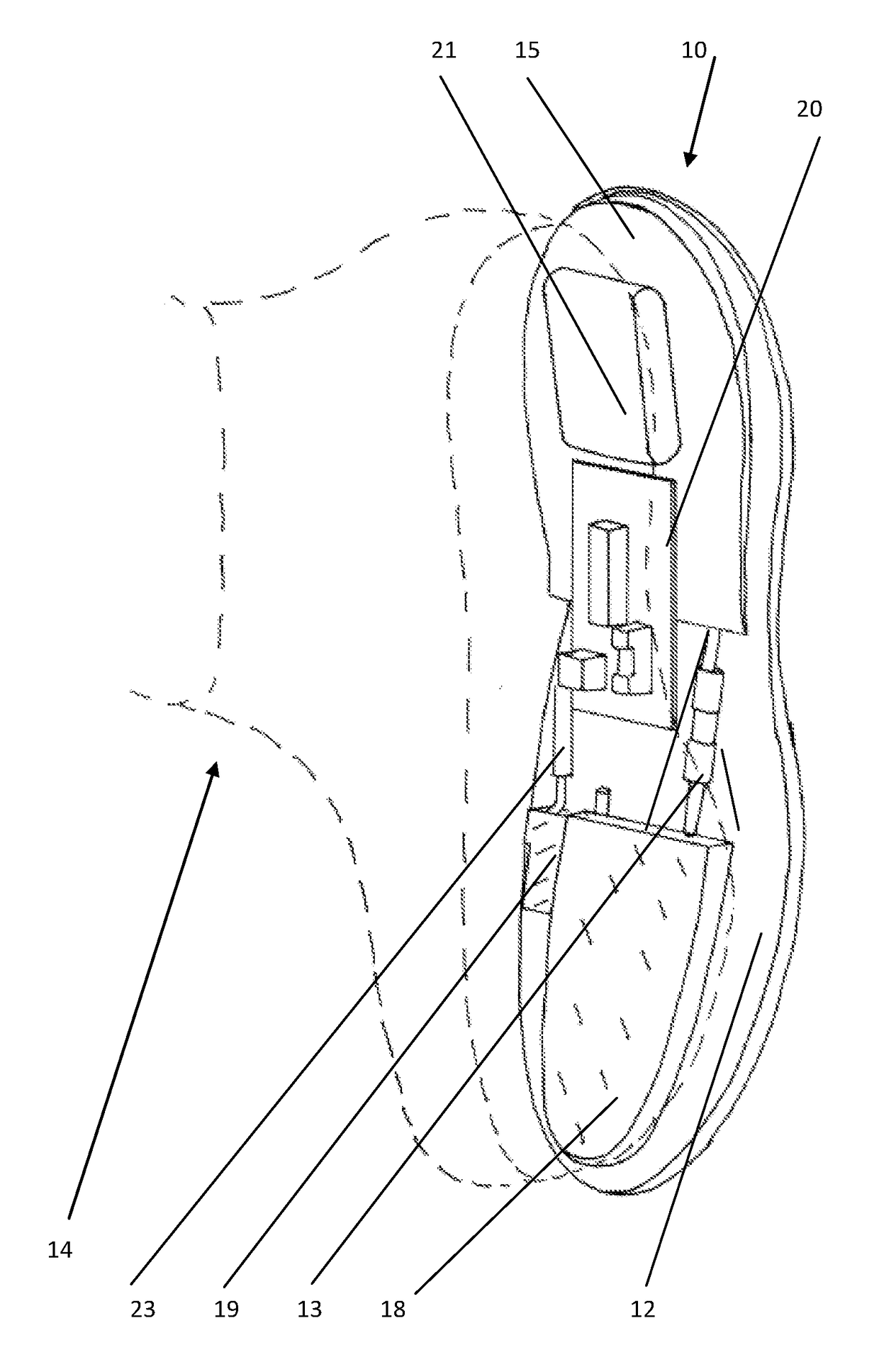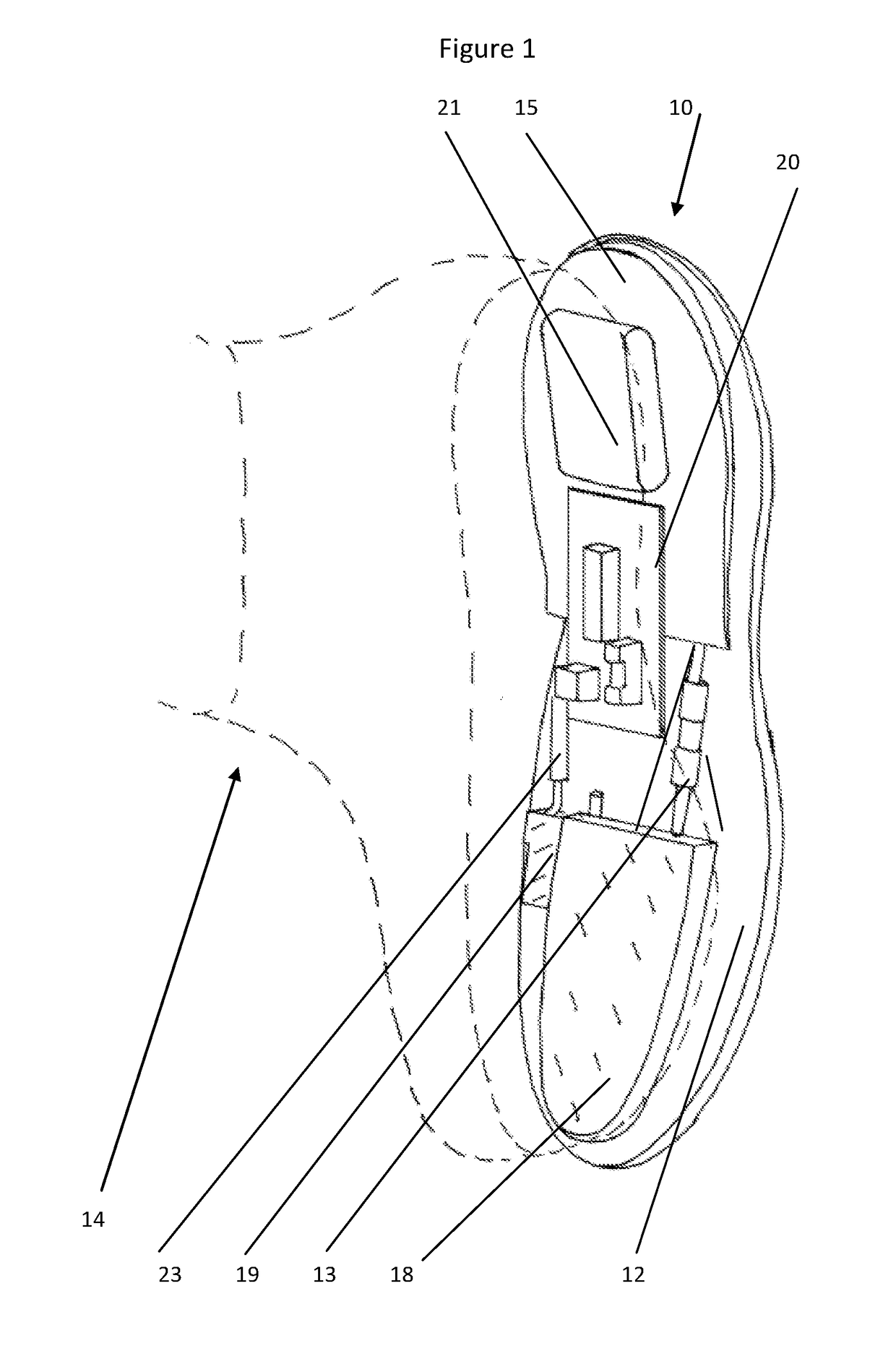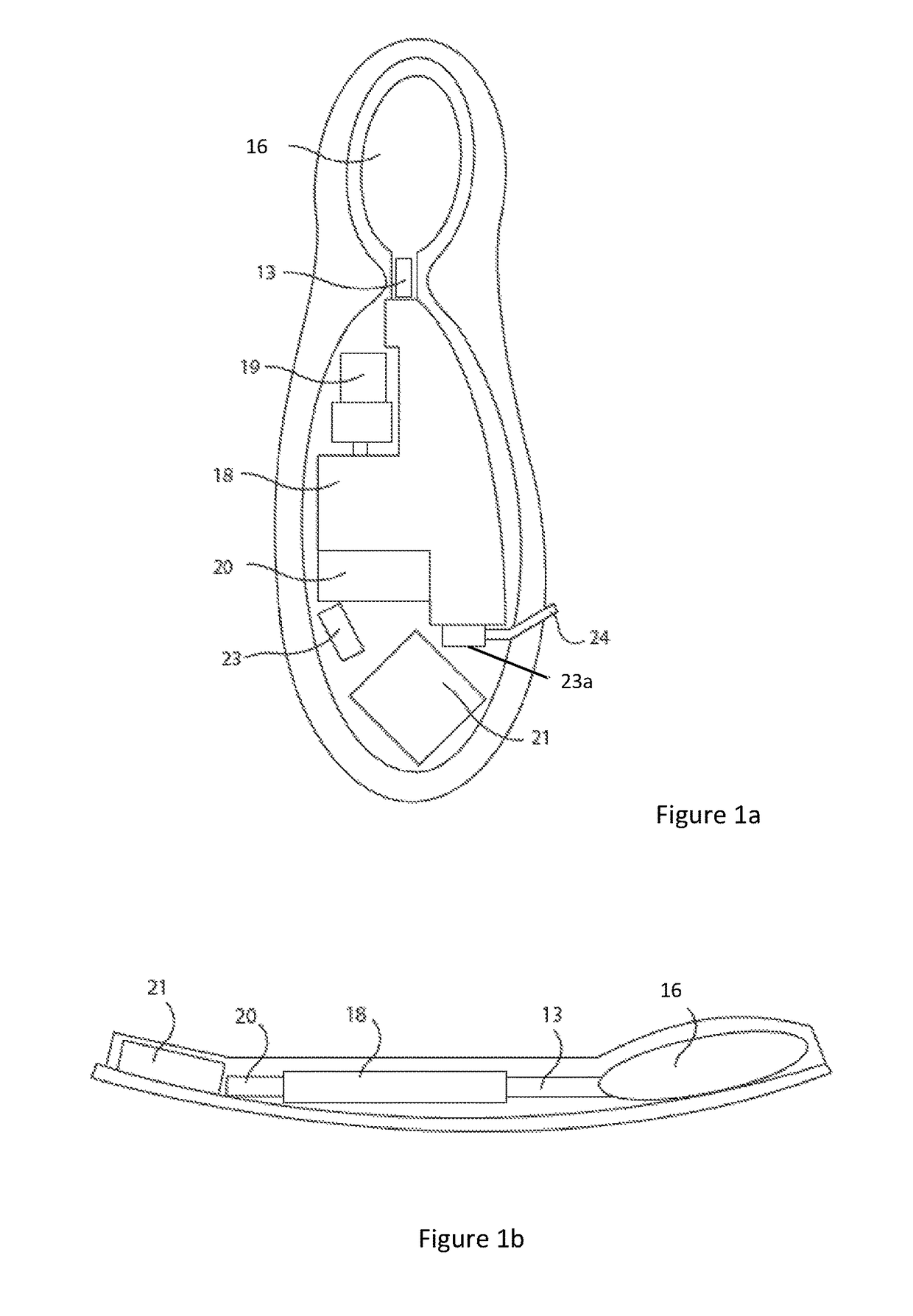Footwear
a technology for shoes and ankle boots, applied in the field of footwear, can solve the problems of affecting the function of the foot, affecting the appearance of the foot, so as to improve the appearance, control the system, and improve the effect of the foo
- Summary
- Abstract
- Description
- Claims
- Application Information
AI Technical Summary
Benefits of technology
Problems solved by technology
Method used
Image
Examples
Embodiment Construction
[0042]In order to provide a better understanding of the present invention an embodiment of the invention will now be described. It will be apparent, however, to one skilled in the art, that the present invention may be practised without these specific details. This should not be construed to limit the present invention, but should be viewed merely as an example of a specific way in which the invention can be implemented. Well known features have not been described in detail so as not to obscure the present invention.
[0043]Referring now to FIG. 1, there is shown a first embodiment of the present invention, where there is shown a boot 10 having a sole 12, and an upper 14. Details of the offloading elements are not shown, such elements being known in the art. Heel section 15 includes a fluid pump section 16, which is connected via conduit 13 to a reservoir 18. The fluid is conveniently air; manual pumps and electrical pumps are widely available. An electric pump 19 operates under the c...
PUM
 Login to View More
Login to View More Abstract
Description
Claims
Application Information
 Login to View More
Login to View More - R&D
- Intellectual Property
- Life Sciences
- Materials
- Tech Scout
- Unparalleled Data Quality
- Higher Quality Content
- 60% Fewer Hallucinations
Browse by: Latest US Patents, China's latest patents, Technical Efficacy Thesaurus, Application Domain, Technology Topic, Popular Technical Reports.
© 2025 PatSnap. All rights reserved.Legal|Privacy policy|Modern Slavery Act Transparency Statement|Sitemap|About US| Contact US: help@patsnap.com



